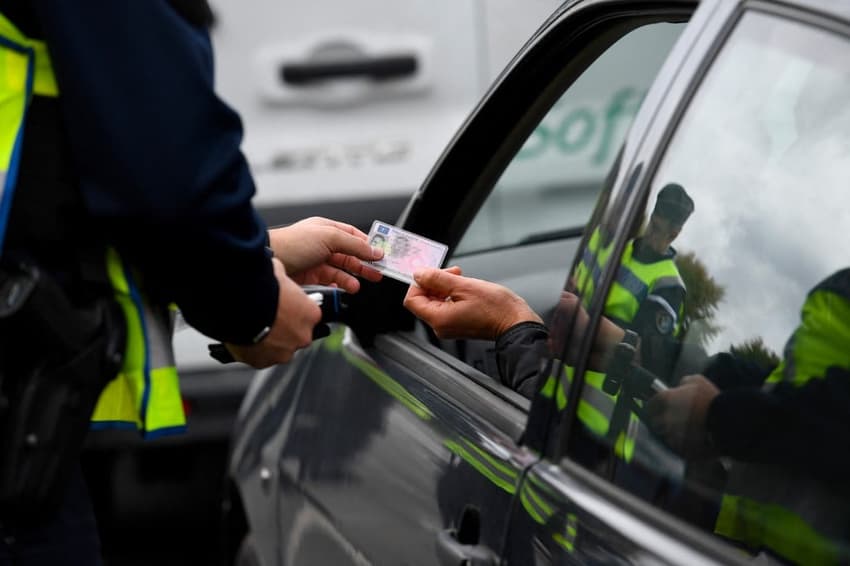Brits in Italy to begin driving licence swap from Thursday

UK licence holders living in Italy can begin the process of swapping for an Italian licence without taking a test from Thursday, March 30th, the British Embassy in Rome has confirmed.
British nationals resident in Italy who hold UK-issued driving licences will be able to make appointments from Thursday onwards to swap for an Italian licence without retaking their test, the British Embassy in Rome announced on Monday.
“We are very pleased to announce that the UK-IT Agreement on the exchange of driving licences for British citizens and UK licence holders living in Italy will enter into force on 30 March 2023,” the Embassy wrote in Facebook and Twitter posts.
READ ALSO: What to know about swapping your UK driving licence for an Italian one
“Once this happens, you will be able to start booking an appointment to exchange your licence with your local Motorizzazione Office.”
A long-negotiated UK-Italian deal reached at the end of December 2022 will allow holders of UK driving licences to obtain an Italian licence without retaking their test - as many feared would be the case following Brexit.
Details of the exchange process and the date from which it would be possible to apply were not immediately available after the agreement was signed in December.
READ ALSO: Who needs to exchange their driving licence for an Italian one?
On Monday, the Embassy said: “In order to exchange your licence, you will need to bring the right documentation” to an exchange appointment at the motorizzazione office.
The Embassy shared the list of documents on the Italian Transport Ministry’s website, which you can find here.
We are very pleased to announce that the 🇬🇧-🇮🇹 agreement on the exchange of driving licences will enter into force on 30 March 2023.
Please refer to our Living in Guide for more info: https://t.co/B3AmCVt7lY
Consult our Q&A on the exchange process: https://t.co/qR4KIWtpWo
— UK in Italy 🇬🇧🇮🇹 (@UKinItaly) March 27, 2023
“Please also check directly with your local Motorizzazione Office for further enquiries relating to your exchange,” the Embassy said.
A list of contact details for Italy’s regional motorizzazione offices can be found here.
Only a handful of countries have agreements with Italy that allow a straight swap of driving licences.
Most countries, including the US, Canada and Australia, do not have such deals in place meaning holders of licences from those countries must retake their driving test in Italian in order to get an Italian licence - a requirement after one year of Italian residency.
For more details on how the UK-Italy agreement will apply to your right to drive in Italy, see the British Government’s Living in Italy website here.
Find The Local's latest Brexit-related news updates for UK nationals in Italy here.
Comments
See Also
British nationals resident in Italy who hold UK-issued driving licences will be able to make appointments from Thursday onwards to swap for an Italian licence without retaking their test, the British Embassy in Rome announced on Monday.
“We are very pleased to announce that the UK-IT Agreement on the exchange of driving licences for British citizens and UK licence holders living in Italy will enter into force on 30 March 2023,” the Embassy wrote in Facebook and Twitter posts.
READ ALSO: What to know about swapping your UK driving licence for an Italian one
“Once this happens, you will be able to start booking an appointment to exchange your licence with your local Motorizzazione Office.”
A long-negotiated UK-Italian deal reached at the end of December 2022 will allow holders of UK driving licences to obtain an Italian licence without retaking their test - as many feared would be the case following Brexit.
Details of the exchange process and the date from which it would be possible to apply were not immediately available after the agreement was signed in December.
READ ALSO: Who needs to exchange their driving licence for an Italian one?
On Monday, the Embassy said: “In order to exchange your licence, you will need to bring the right documentation” to an exchange appointment at the motorizzazione office.
The Embassy shared the list of documents on the Italian Transport Ministry’s website, which you can find here.
We are very pleased to announce that the 🇬🇧-🇮🇹 agreement on the exchange of driving licences will enter into force on 30 March 2023.
— UK in Italy 🇬🇧🇮🇹 (@UKinItaly) March 27, 2023
Please refer to our Living in Guide for more info: https://t.co/B3AmCVt7lY
Consult our Q&A on the exchange process: https://t.co/qR4KIWtpWo
“Please also check directly with your local Motorizzazione Office for further enquiries relating to your exchange,” the Embassy said.
A list of contact details for Italy’s regional motorizzazione offices can be found here.
Only a handful of countries have agreements with Italy that allow a straight swap of driving licences.
Most countries, including the US, Canada and Australia, do not have such deals in place meaning holders of licences from those countries must retake their driving test in Italian in order to get an Italian licence - a requirement after one year of Italian residency.
For more details on how the UK-Italy agreement will apply to your right to drive in Italy, see the British Government’s Living in Italy website here.
Find The Local's latest Brexit-related news updates for UK nationals in Italy here.
Join the conversation in our comments section below. Share your own views and experience and if you have a question or suggestion for our journalists then email us at [email protected].
Please keep comments civil, constructive and on topic – and make sure to read our terms of use before getting involved.
Please log in here to leave a comment.